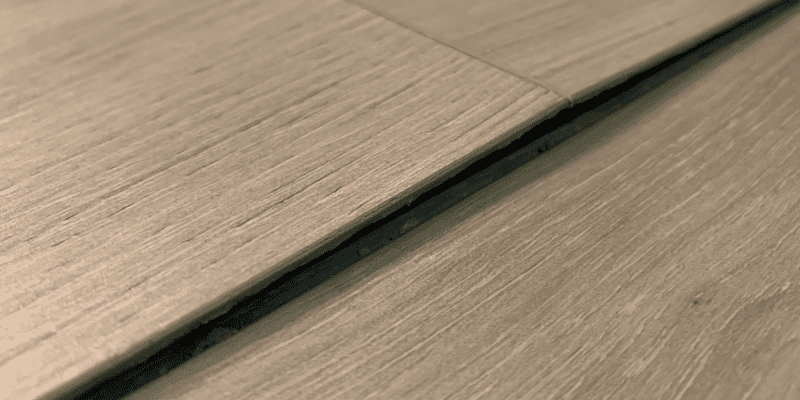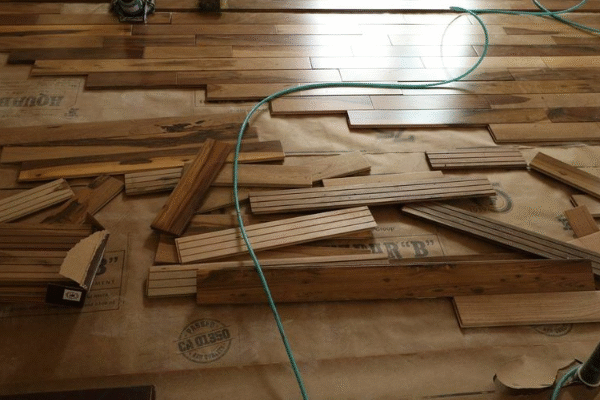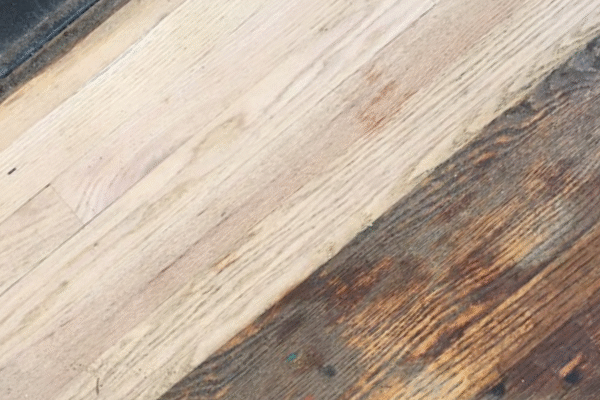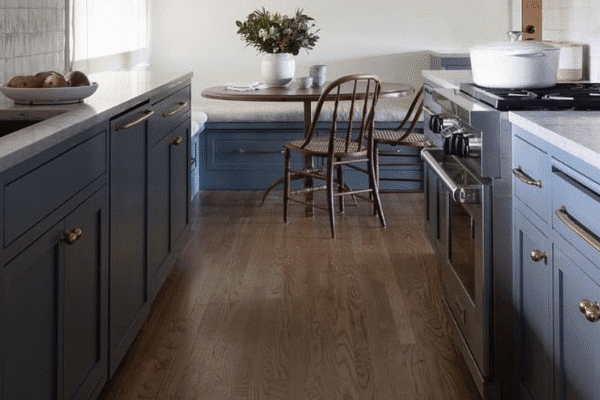🔥 Why Perfect Floors Start Below the Surface
Think Your New Floors Will Look Perfect? Not Without This One Crucial Step Most Contractors Skip.
If you’re dreaming of jaw-dropping hardwood floors that glide seamlessly from room to room — no dips, creaks, or weird humps in sight — then you need to know one industry truth: it all starts beneath the surface. And skipping this step? That’s how dream floors become homeowner nightmares.
In this post, we’re pulling back the curtain on one of the most misunderstood (and dangerously underestimated) steps in any flooring project — floor leveling and subfloor preparation. Whether you’re planning a hardwood floor installation in Seattle or dealing with uneven floors in Bellevue, read this before you spend another dollar.
🎯 “Why Are My New Floors Uneven?”
The questions every frustrated homeowner Googles too late:
- Why is my brand-new hardwood creaking already?
- Is it normal to have soft spots under laminate?
- Can tile crack because of an uneven floor?
- What does subfloor leveling even mean?
If you’ve found yourself asking these after investing thousands in a new floor, you’re not alone. Subfloor issues are one of the top causes of flooring failure — and they’re usually invisible until the damage is done.
🚧 The Hidden Foundation of Every Floor: Subfloor & Leveling
Every flooring surface — hardwood, LVP, tile, even carpet — sits on a foundation layer called the subfloor. This could be plywood, OSB, or concrete, and it’s rarely as perfect as it seems.
Common problems we see during subfloor inspections:
- High spots from warped plywood or uneven concrete pours
- Low dips from moisture damage or settling
- Squeaky seams or soft spots from poor fastening
- Sloping areas due to foundation shifts or poor construction
At LUKS Construction, we’ve seen even new builds in Kirkland and Sammamish with shockingly uneven subfloors. Why? Because many builders only meet “minimum code” — not perfection.
🔍 Case Study: When the Real Problem Is Below
Homeowner: Jennifer from Bellevue
Flooring: 7” wide-plank white oak
Issue: Wavy, creaking floors just weeks after install (by another contractor)
Jennifer called us after her new floors began separating and creaking badly. The boards looked beautiful, but something felt “off.”
Diagnosis? A 3/8″ dip running the length of her living room. Her installer had ignored the subfloor issues and laid the floors directly over them.
We had to remove the entire floor, grind down the high spots, fill in the low areas with specialized self-leveling compound, and reinstall from scratch. It was expensive, heartbreaking — and entirely preventable.
⚖️ Why Floor Leveling Can Make or Break Your Floors
Think of it this way: installing floors over an unlevel subfloor is like installing custom cabinets on a crooked wall — the flaws will show, no matter how beautiful the materials are.
Here’s what proper floor leveling prevents:
- ✅ Gaps and board separation
- ✅ Creaks and movement underfoot
- ✅ Premature wear on flooring joints
- ✅ Cracks in tiles or grout
- ✅ Warranty voiding from flooring manufacturers
🛠️ How LUKS Construction Does It Right
At LUKS Construction, we approach subfloor preparation as the most critical part of any floor installation. That’s why we include it in every estimate — and explain it to every client.
Our 5-Step Subfloor Perfection Process:
- Precision Measurement – Laser levels and long straight edges help us detect every flaw.
- Moisture Testing – We check both concrete and wood subfloors for hidden moisture risks.
- Mechanical Grinding or Shaving – We shave down high spots to create a consistent plane.
- Self-Leveling Underlayment – We pour high-strength compounds to flatten concrete.
- Structural Repairs if Needed – We reinforce or replace damaged subfloor panels.
📍 From Kirkland to Issaquah, our goal is perfection — not just “flat enough.”
💰 “How Much Does Floor Leveling Cost?”
Let’s Talk Numbers — and ROI
Floor leveling typically adds $4–$10 per square foot, depending on the condition and material.
But here’s the deal: Skipping it can cost 3–5x more later. We’ve been called in to rip out brand-new $20,000 hardwood floors that failed because of a $5,000 leveling shortcut.
Think of it as insurance for your investment — one that protects your floors, your resale value, and your peace of mind.
🧠 Pro Tip: Ask This Before Hiring a Flooring Contractor in Seattle
❓ “How do you handle subfloor leveling, and is it included in your estimate?”
If they hesitate or say it’s “not always needed,” walk away. Great contractors address the surface before they ever install anything on it.
👀 Real Home, Real Transformation: Woodinville Before & After
In a recent Woodinville remodel, we were brought in after a client’s DIY installer skipped leveling. Their new floors bounced and creaked like a trampoline.
We demoed the flooring, reinforced the subfloor, poured self-leveling concrete throughout the main floor, and reinstalled custom European oak. The result? Dead-flat, rock-solid, and silent underfoot.
Now the family walks barefoot every morning — no rugs needed to hide the bumps.
📍 Where We Work — And Why Locals Trust Us
LUKS Construction proudly serves homeowners, realtors, and designers in:
- Seattle (floor leveling Seattle, hardwood installation Seattle)
- Bellevue (subfloor preparation Bellevue, heated floors Bellevue)
- Kirkland & Redmond (flooring contractor Kirkland, hardwood stairs Redmond)
- Woodinville, Issaquah, Sammamish, Mercer Island, Snohomish & King County
With 5-star reviews and a reputation for solving the problems others skip, we’re the trusted name in quality flooring that lasts.
📞 Ready to Get It Right the First Time?
Whether you’re planning a new hardwood installation or fixing a past mistake, don’t leave it to chance — start with the subfloor.
🏠 Visit our showroom at
11232 120th Ave NE, STE 110, Kirkland, WA 98033
and explore our premium hardwood and flooring displays in person.
👉 Book your free in-home estimate at www.luksconstruction.com
📱 Or call us at 425-971-2895
Because perfect floors don’t start at the surface — they start below it.






